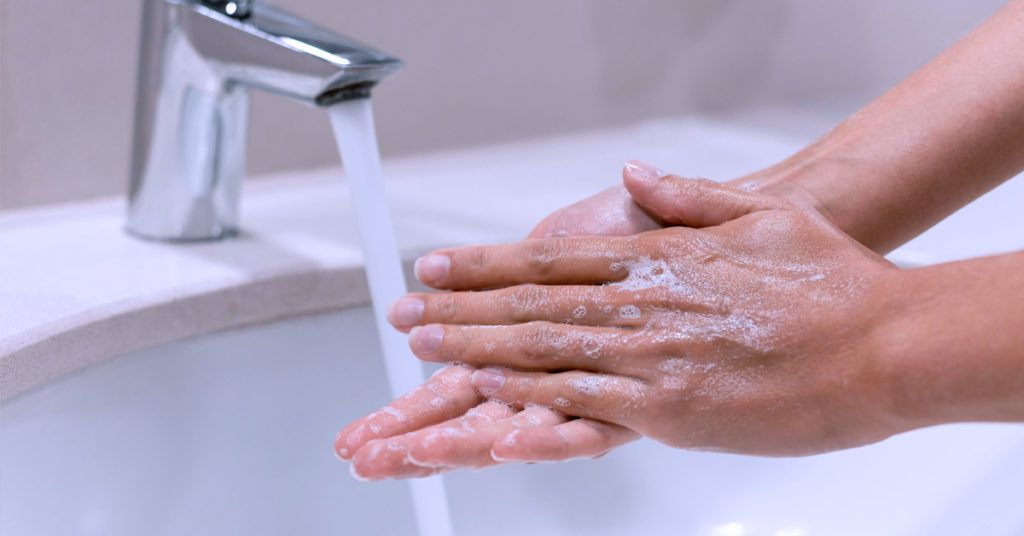How Effective is Handwashing against COVID-19?

Introduction
Handwashing plays a critical role in preventing any forms of illnesses, more predominantly on the communicable diseases such as COVID-19. As we face the economic and health threats brought about by the pandemic, hand hygiene must not only be taken as a precautionary measure but more so as a part of our personal health care daily routine.
All About Handwashing
Statistics showed that on an average, 300 surfaces are touched every 30 minutes, risking us to gather 840,000 bacteria and viruses into our bodies. In addition, 80% of communicable diseases are transmissible by touch. By not washing our hands with soap and water, COVID-19 are in no doubt to easily spread in the community and nation in the long-term. With these numbers in hand, what are the physiological processes behind handwashing?
• Transmission. SARS-CoV2, the respiratory virus responsible for COVID-19, transfers from one person to another by droplets from a carrier who coughs, sneezes or by their saliva or discharge coming from their nose or mouth. Although further studies suggest that COVID-19 are airborne in nature, wherein the droplets spread happens through air suspension even in long distances, the virus can nevertheless be found in contaminated surfaces, posing more chances of getting the infection.
• Prevention. Handwashing warrants the spread of COVID-19 infection. Our eyes, nose and mouth are the entry points of the virus. Accidentally touching these areas of our face can surely be invaded by the virus. The virus can also be possibly found on foods and drinks from preparation and ingestion of people who tested positive for COVID-19. That is why it is also advisable to use disposable eating utensils once infected and at the same time, proper disposal is a must to prevent further contamination from the virus. The recommended actions still necessitate washing of hands in all conditions.
• Fight against antibiotic resistance. COVID-19 is a viral illness. While there is no specific medication yet to combat against it, certain anti-viral drugs and antibiotics are prescribed and used in the hospitals for the treatment modality, depending on the patient’s signs and symptoms and their diagnostic findings. As mentioned above, if COVID-19 can be prevented by handwashing, it is more likely to lessen the incidence of taking antibiotics, therefore smaller chances of antibiotic resistance. Antibiotic resistance arises when there is a change in response of the bacteria to certain antibacterial medications. Once diagnosed, the health care practitioner will be having a hard time to find a specific antibiotic suitable to the patient. Furthermore, higher generations of antibiotics are usually prescribed to these patients to overpower the severity of illness caused by the bacteria. Complications from COVID-19 typically requires antibiotics as a mode of treatment. Countering these complexities calls to give a weight importance for proper handwashing.
Proper Handwashing
Despite all the reasons stated, survey displays that most people wash their hands only for 6 seconds. Moreover, only about 20% of people practice drying their hands after being washed. A study demonstrates that damp hands can cause 1000x more transmission of infection as compared to dry hands. According to World Health Organization (WHO), the entire duration for hand rubbing must be 20-30 seconds whereas handwashing must be done for 40-60 seconds. The following steps are endorsed by WHO for proper handwashing:
• Wet hands with water;
• Apply enough soap to cover all hand surfaces;
• Rub hands palm to palm;
• Right palm over left dorsum (upper surface of the hand) with interlaced (rubbed together) fingers and vice versa;
• Palm to palm with fingers interlaced;
• Backs of fingers of opposing palms with fingers interlocked (hold hands together);
• Rotational rubbing of left thumb clasped in right palm and vice versa;
• Rotational rubbing, backwards and forwards with clasped fingers of right hand in left palm and vice versa;
• Rinse hands with water;
• Dry hands thoroughly with a single use towel;
• Use towel to turn off faucet;
• Your hands are now safe.
Handwashing using soap and water is the best definitive way for COVID-19 illness and prevention. However, if soap and water are not available at the moment, a hand sanitizer that contains at least 60% alcohol is proposed. Sanitizers can rapidly decrease the number of possible virus contacted, but they are not as 100% as effective in removing all types of unwanted microbes on hands, particularly when hands are obviously soiled and greasy. According to Center for Disease Control and Prevention (CDC), a hand sanitizer is used by these easy to follow steps:
• Apply the gel product to the palm of one hand (read the label to learn the correct amount).
• Rub your hands together.
• Rub the gel over all the surfaces of your hands and fingers until your hands are dry. This should take around 20 seconds.
Conclusion
Wellness and illness prevention always tops handwashing as an ultimate recommendation by the medical experts to protect ourselves, our families and the whole world against COVID-19. Everyone can be a modern day hero of this generation, if only, we always wash our hands. Handwashing saves lives!
References:
https://allportablesinks.com/blogs/news/17-handwashing-facts-and-statistics
https://www.cdc.gov/handwashing/why-handwashing.html
https://www.who.int/gpsc/5may/Hand_Hygiene_Why_How_and_When_Brochure.pdf
https://www.cdc.gov/handwashing/when-how-handwashing.html
